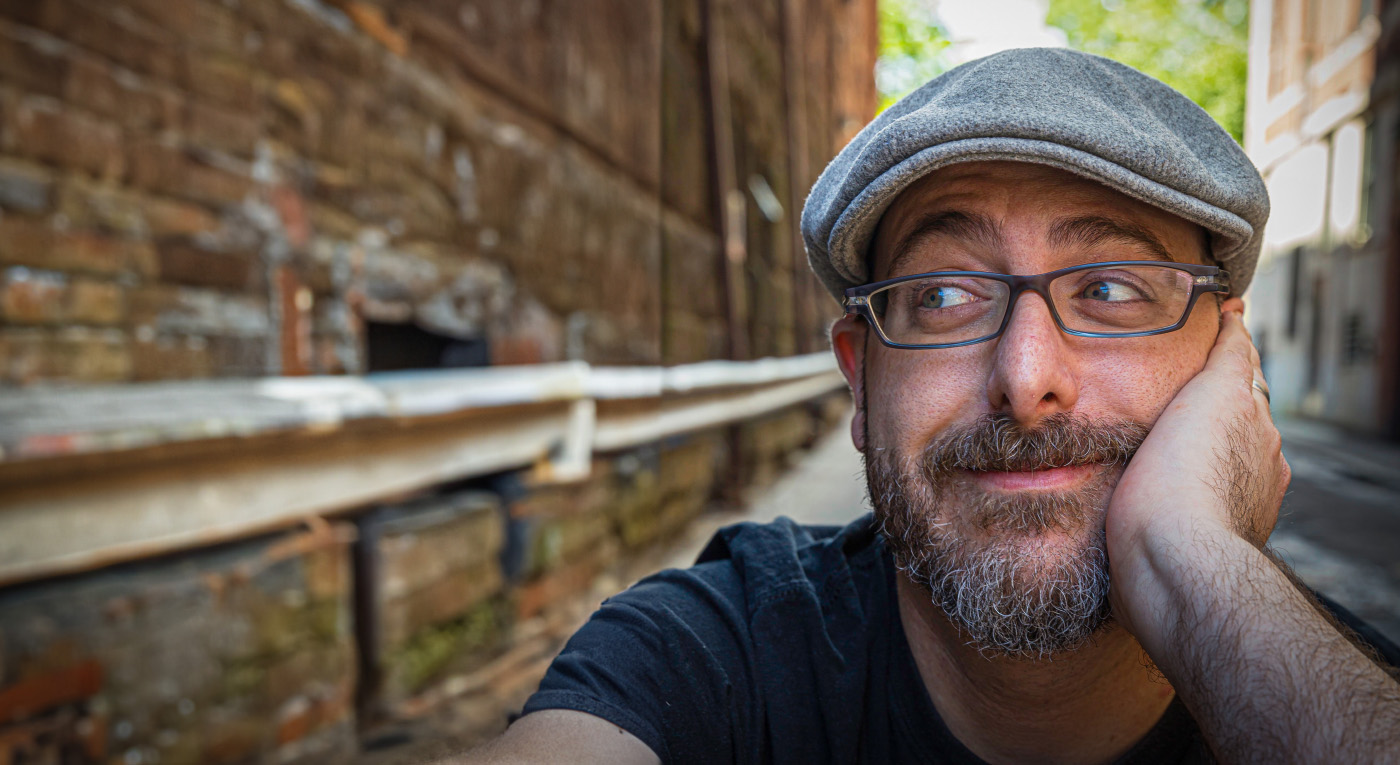Josh Funk’s Double Life

Josh Funk lives two lives. During the workday, he’s a coder. In his off hours, Funk goes on adventures with breakfast treats, solves mysteries with the New York Public Library’s lions, and turns familiar fairy tales upside down.
Funk graduated from UMass in 2001 with a BS in computer science, and he now works with MIT’s Lincoln Laboratory on the Hanscom Air Force Base building models and simulations of networks. But he is also the author of 19 picture books, which have garnered dozens of awards and accolades.
Funk came to UMass undecided on a major, so he took a variety of intro classes, one of which was coding. He liked it so much he kept going. His first coding job was with OPNET, which was eventually bought by Riverbed Technology, and he’s worked with them ever since. (His current position with MIT is as a Riverbed contractor.)
It was reading books to his children that sparked Funk’s second career. “I had a creative side that was not related to coding and I wanted to try to write my own books.” According to Funk, his first efforts were terrible. But his wife encouraged him to take a course in writing children’s books, which connected him to a community of writers. Then, like any good coder, he kept working at it until he got it right. Four years later, in 2015, he published his first book, Lady Pancake & Sir French Toast, illustrated by Brendan Kearney. Funk went on to write four more books with those characters, as well as the It’s NOT a Fairy Tale series (illustrated by Edwardian Taylor), the Patience & Fortitude at the NYPL duology (illustrated by Stevie Lewis), and My Pet Feet (illustrated by Billy Yong), among others. His latest book is Dear Unicorn, illustrated by Charles Santoso.
Funk didn’t bring coding into his books until he wrote How to Code a Sandcastle. In Sandcastle, which the Smithsonian named one of the ten best children’s books of 2018, Pearl and her robot, Pascal (both named for coding languages, of course) need to build a sandcastle before summer vacation is over. She achieves her goal by programming Pascal—breaking the project into smaller steps and using conditionals, loops, and other basic coding concepts to tell Pascal exactly what to do.
From the beginning, Funk wanted the main character to be a girl to address, in a small way, the gender imbalance in coding. Coincidentally, when he was deciding on a publisher, Penguin Random House had begun partnering with Girls Who Code, so he opted to work with them.

With the second coding book, Funk takes the education a step further, introducing variables. How to Code a Rollercoaster takes place at an amusement park, with Pearl using variables to keep track of her tokens and figuring out how to use code to plan her day with Pascal, riding lots of rides and getting to the popular Python Coaster when its line is the shortest.
Both of Funk’s coding books are filled with in-jokes. They begin with “Hello, World,” there’s a dog named Ada Puglace, a log flume called Base 2, and ice cream flavors that include boolberry, mocha java, and macintosh apple. But beyond the interwoven lessons in coding and the Easter eggs, they also tell a fun story, beautifully rendered by illustrator Sara Palacios.
Not surprisingly, there are similarities in the way Funk approaches building a story and the way he engineers a simulation. “They’re both writing,” he observes. “I’m often putting stories together and thinking about the different ingredients that need to go into a story. It needs to have characters and a plot and conflict and rising tension and a satisfying conclusion. And just like in coding, you need a design for how you’re going to achieve the outcome you need.”
In particular, Funk sees a lot in common with the trial and error that comes along with both writing and coding. “Sometimes when you’re simulating things, you want to try a whole different bunch of input values and see what works the best. And then sometimes it’s just—you made a typo and you need to fix it. That’s a lot like telling a story.”
Funk has also found the flip side of the coin to be true—that his writing life impacts his tech life. This is less about the actual act of writing, and more about becoming immersed in the world of educators and librarians, which helps him see his work through a different lens and gives him a broader perspective. “It’s not necessarily that writing has made me a better coder or different type of coder,” he says, “but it’s made me a better professional in the science world.”
This story originally appeared in the Winter 2024 issue of Significant Bits Magazine.